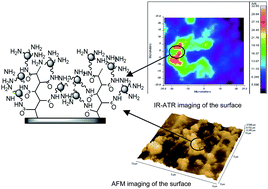Three steps to organic–inorganic hybrid films showing superhydrophilic properties†
Abstract
The concept of surface

* Corresponding authors
a
Université de Nice-Sophia Antipolis, Laboratoire de Chimie des Matériaux Organiques et Métalliques (CMOM), Equipe Chimie Organique aux Interfaces, Parc Valrose, Nice Cedex 2, France.
E-mail:
guittard@unice.fr
Fax: +33 4 9207 6156
Tel: +33 4 9207 6156
The concept of surface

 Please wait while we load your content...
Something went wrong. Try again?
Please wait while we load your content...
Something went wrong. Try again?
E. Celia, E. Taffin de Givenchy, S. Amigoni and F. Guittard, Soft Matter, 2011, 7, 10057 DOI: 10.1039/C1SM05864A
To request permission to reproduce material from this article, please go to the Copyright Clearance Center request page.
If you are an author contributing to an RSC publication, you do not need to request permission provided correct acknowledgement is given.
If you are the author of this article, you do not need to request permission to reproduce figures and diagrams provided correct acknowledgement is given. If you want to reproduce the whole article in a third-party publication (excluding your thesis/dissertation for which permission is not required) please go to the Copyright Clearance Center request page.
Read more about how to correctly acknowledge RSC content.
 Fetching data from CrossRef.
Fetching data from CrossRef.
This may take some time to load.
Loading related content
